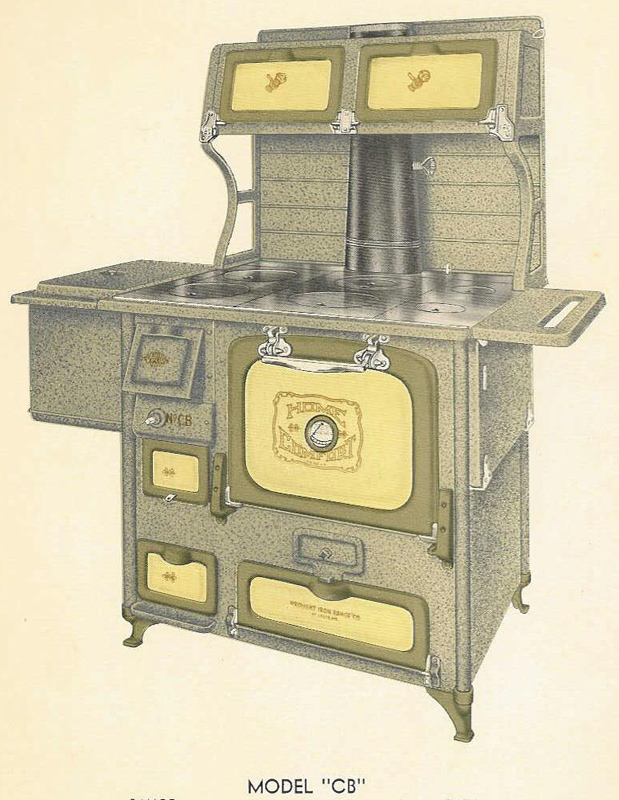|
Moderated by NW Okie! |
Volume 12 , Issue 452010Weekly eZine: (374 subscribers)Subscribe | Unsubscribe Using Desktop... |
Home Comfort Cookbook (1934) - Methods of Cooking (cont.)

1934 Methods of Cooking continued from the 1934 Wrought Iron Range Home Comfort cookbook. Last week we promised you more methods of cooking. This week we bring you boiling, stewing, steaming and frying.
Boiling -- Another modification of primitive roasting, the difference being that the heat is applied through the medium of boiling water. In fresh meats -- called pot-roasts -- sear, or harden the outer side by plunging into boiling water. Do not allow it to remain at this high heat very long, not more than five minutes, but allow it to finish cooking by simmering for the required period.
The pot should be but slightly larger than the meat, and only sufficient water to cover it used; but, the meat should be keep completely covered while cooking and precaution taken not to allow the water to entirely boil away.
In salt meats, the outer surface should not be closed by plunging into boiling water, but should be immersed in cold or lightly warm water and allowed to come to the boiling point, held there for about five minutes, then dropped back to simmering. Very salt meats should be soaked in cold water before boiling. BVegetable should be boiled in slightly salted water or with salt meats.
Stewing -- A modification of boiling, employed principally for small or cheaper cuts of meat, especially when it is to be served with its juices, or gravy, and after the ingredients are well blended, lay the meat into it, allow it to boil for about two minutes, then complete the cooking by simmering. The time required for stewing greatly depends upon the quality of the meat -- one and a half to two hours is usually necessary.
Steaming -- Cooking by steam, a method necessary for certain foods. Accomplished without special equipment by placing a small quantity of water in the bottom of a boiling pot and resting the food to be steamed upon a framework of wire (a perforated tin can inverted and resting on the bottom will do very well) above the water. covered and set to boil, the steam fills the pot and supplies the moist heat with an even temperature.
Frying -- Perhaps the most used of cooking methods, and one of the easiest to do well, and also badly. Proper frying is of the greatest importance to the household. Two methods are in practice -- deep and shallow frying.
Deep-fat frying -- far superior to shallow frying -- is done in a deep pan or kettle, of hot fat, such as lard, vegetable fat, or butter, referred to in "Home Comfort" recipes as cooking fat. The kettle -- a graniteware stew-kettle is ideal -- should be kept for this purpose, and provided with a woven wire frying-basket, or tray, suspended into the kettle to within about an inch of the bottom. The fat should be hot -- just under the snaking point -- before placing the articles to be fried into it. Drop them in one or two at a time to allow the fat to regain its temperature after being slightly cooled by their cold surface.
use plenty of fat, always sufficient to cover the articles, for there is very little waste, and no real economy in using too little, since by this method the surface of the articles are quickly crisp, the cooking fat does not penetrate far, nor does the fat absorb the juices or odor of the food to any great extent.
| View or Add Comments (0 Comments)
| Receive
updates ( subscribers) |
Unsubscribe
| © . Linda Mcgill Wagner - began © 1999 Contact Me | |
